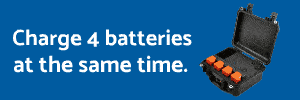I bought one of those circular, folding helipads but it’s proven to be not much use. Up here, the soil is often too dry and hard to get the plastic pegs in far enough so they won’t damage the props. And after it rains—well, lots of red mud.
Without the pegs, it works okay for launch, but the downdraft from the props on landing simply blows it away. I’ve had more success with a very light rectangle of Gatorboard (some kind of foam core coated with cardboard) but even it can move about a bit in the downdraft. Now that the Evo has the boat launch feature, I’ve been thinking about using something more substantial and higher off the ground—maybe a small folding picnic table. Take-offs should be okay, but landings would have to be very precise.
Any ideas?
Without the pegs, it works okay for launch, but the downdraft from the props on landing simply blows it away. I’ve had more success with a very light rectangle of Gatorboard (some kind of foam core coated with cardboard) but even it can move about a bit in the downdraft. Now that the Evo has the boat launch feature, I’ve been thinking about using something more substantial and higher off the ground—maybe a small folding picnic table. Take-offs should be okay, but landings would have to be very precise.
Any ideas?





